Here’s where you find your segments…
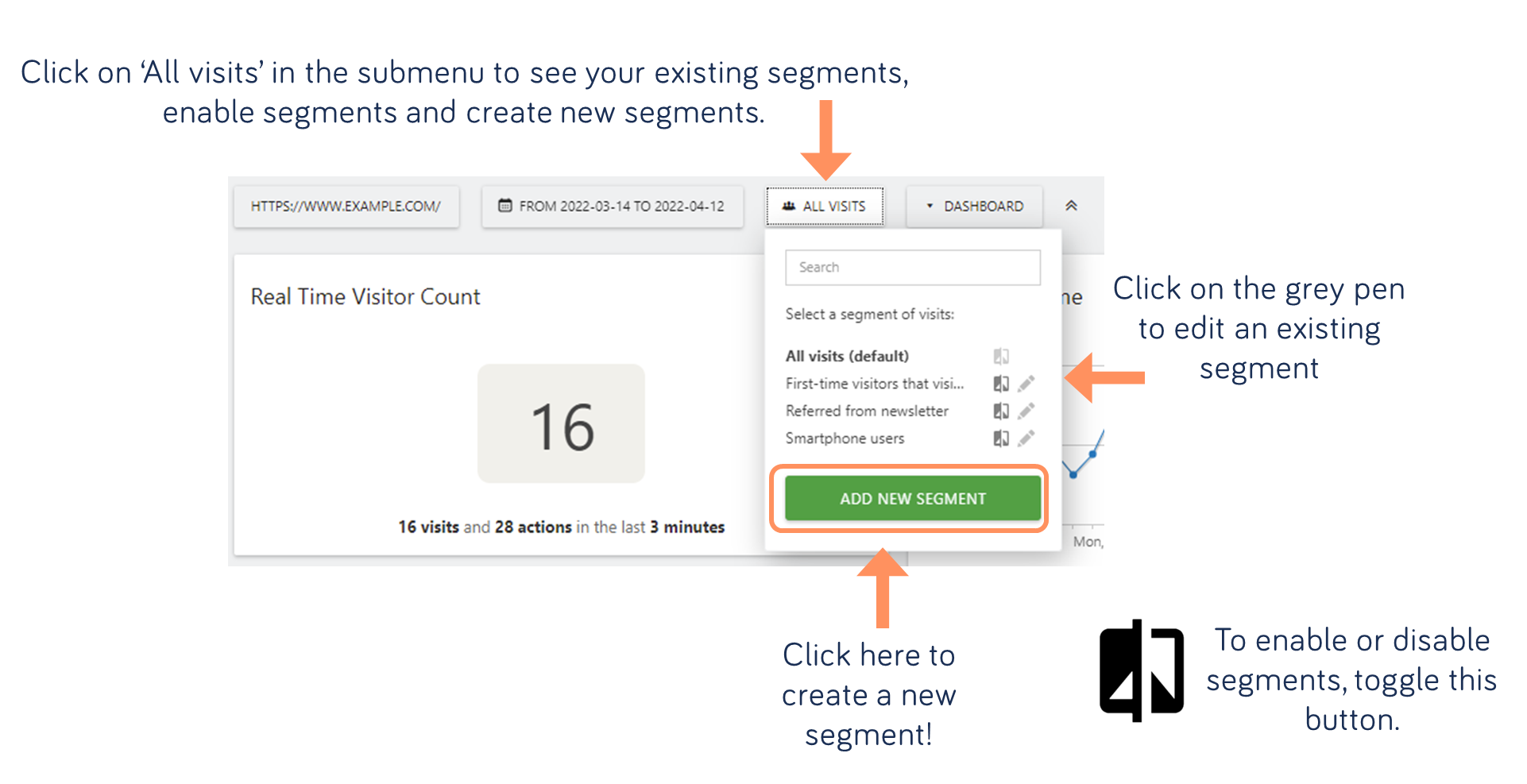
… and here’s where you create an segment!
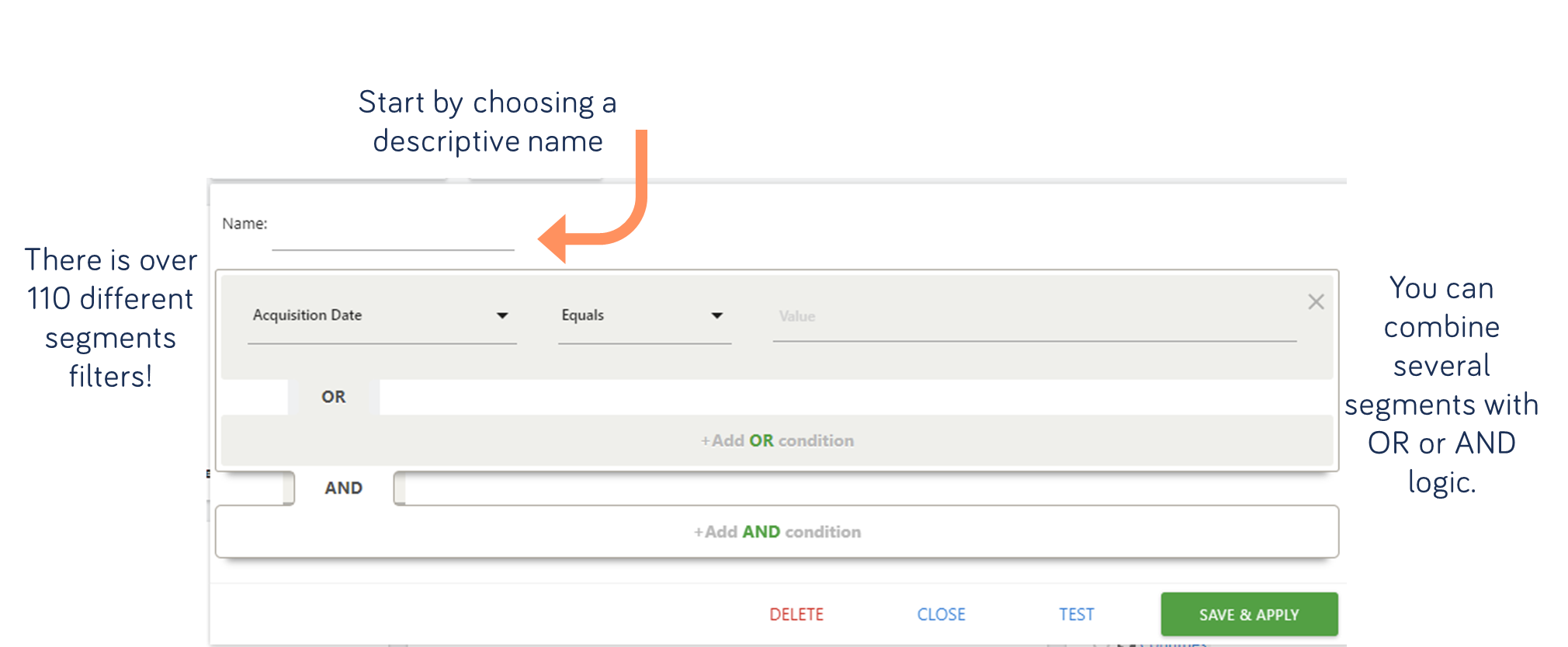
Here is some useful segments and how to create them!
Visit types
New visitors are visitors who are visiting the website for the first time or the first time with a new device. Segmenting new visitors can reveal navigation and usability issues, and help focus marketing efforts.
Good questions to ask
- What pages are they landing on?
- How many page interactions do they have?
- How did they get to your website?
- How long are they spending on your website, compared to returning visitors?
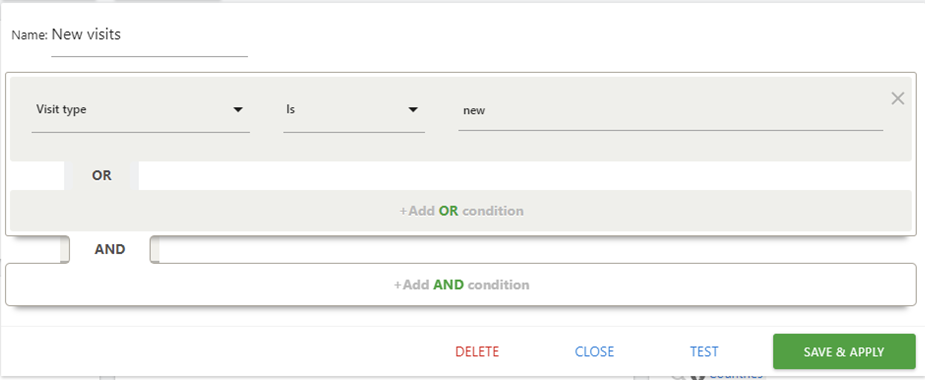
Visit type is new
Devices
This lets you see how smartphone users behave on your website. Comparing it to desktop users lets you see differences and similarities in their behavior and can help you identify improvement areas in the mobile version of your website.
Good questions to ask
- How many actions do mobile users have on average compared to desktop users?
- What are their most visited pages?
- How are they getting to your website?
- How does their bounce rate compare to desktop users?
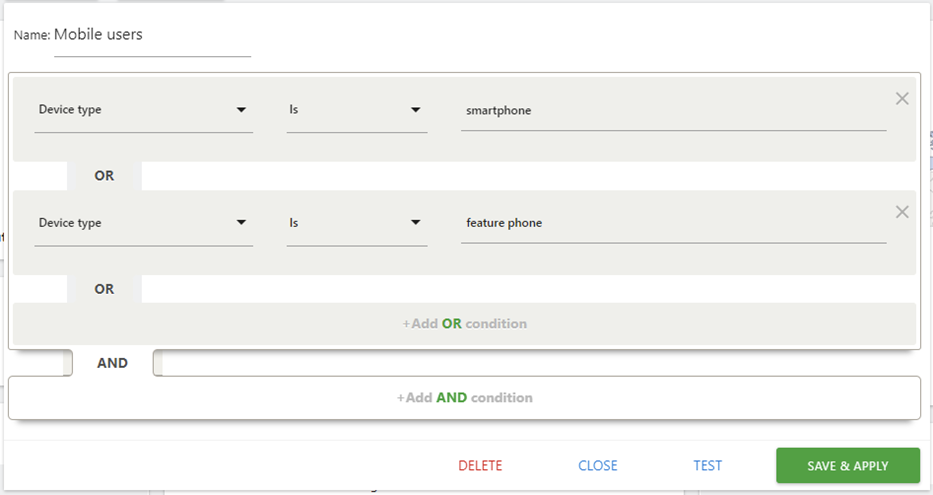
Device type is smartphone
or
Device type is feature phone
Channel type
Search visits are visitors who used a search engine to find your website. Note that this segment excludes visitors who clicked on campaign links in the search results. Search visits can help you optimize your top search pages and find your low performing pages.
Good questions to ask
- What pages do they land on?
- What pages are the most visited?
- How many actions do they have compared to other channel types?

Channel type is search
* To see which keywords the user’s used you need to have a Google Search Console set up and connected to Extellio. See our guide “How to connect Google Search console” to learn more.
Landing pages
This segments visitors who landed on the home page when they first entered the website. It’s useful for when you want to evaluate and optimize certain pages.
Good questions to ask
- How many actions do they have compared to other entry pages?
- How does their bounce rate compare to other entry pages?
- What channels are the visitors coming from? (What search words were the visitors using?)
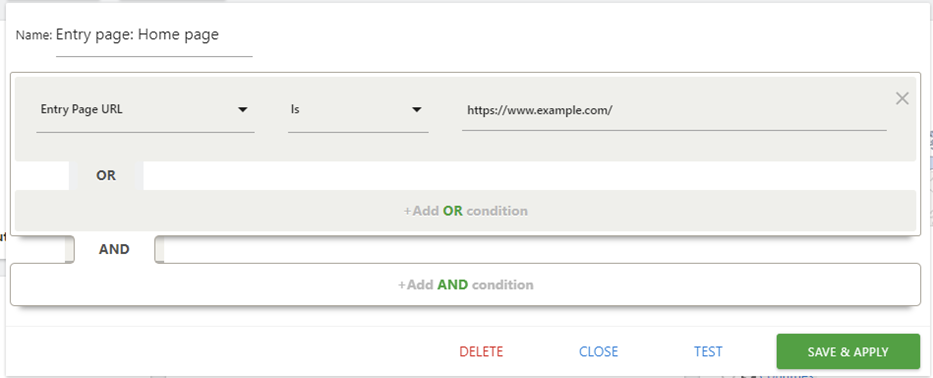
Entry Page URL is https://example.com/
Used site search function
You can segment visitor’s who used the site’s search function. It can be used to continually evaluate the search function and help optimizing it.
Good questions to ask
- How many actions do they have compared to those who didn’t use the search function?
- How many searches did they perform?
- What pages are most visited?
- How long did they spend at the website?
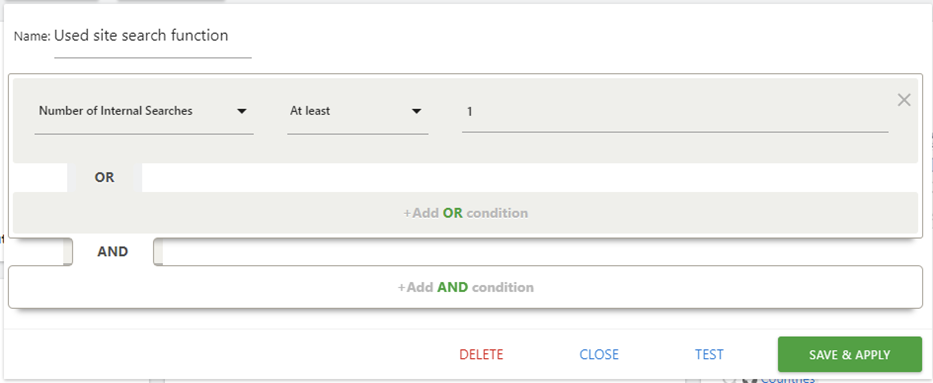
Number of Internal Searches At least 1
Search queries
You can segment visitors who searched for specific queries in the search function. It can be used to do health checks on your most common search queries and to further optimize the search function.
Good questions to ask
- What destination pages are most visited?
- How many visitors go back to the search results?
- How many searches did they perform?
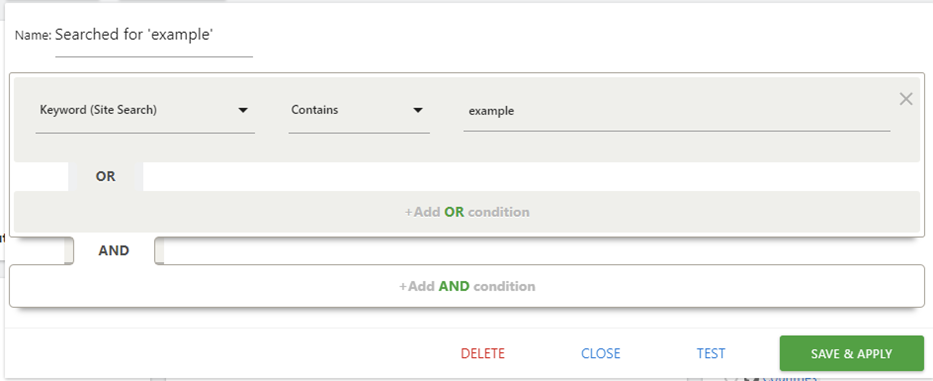
Keyword (Site search) contains example
Time of the day
This segments visitors who started their visit between 8 and 8:59 in the morning. It’s not uncommon to see time-related trends in your web traffic and segmenting on time of the day can help gain more insight to improve the user experience.
Good questions to ask
- What pages do they land on?
- How many actions do they have compared to other times?
- How well are they converting goals compared to other times?
- What are the most visited pages?
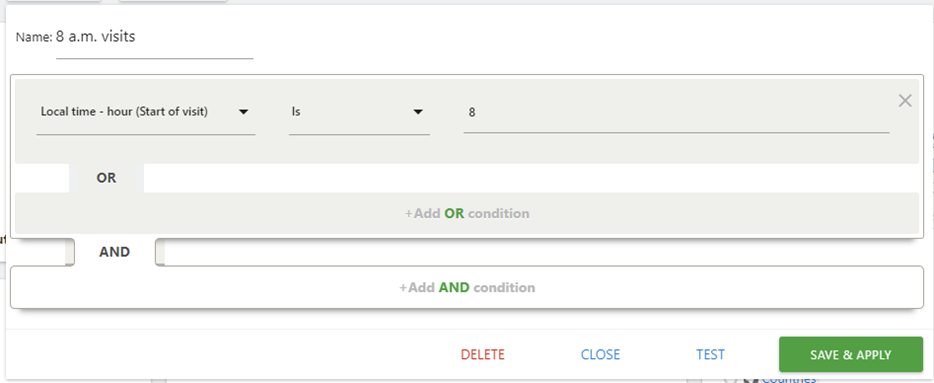
Local time – hour (Start of visit) is 8
Bounced visitors
Bounced visitors are visitors that leave your website without performing an action, like clicking or navigating to another page on your website. A high bounce rate is generally considered bad and segmenting bounced visits can help figure out patterns.
Good questions to ask
- What pages do they land on?
- What channels are they coming from?
- Is there differences between different times of the day and different days?
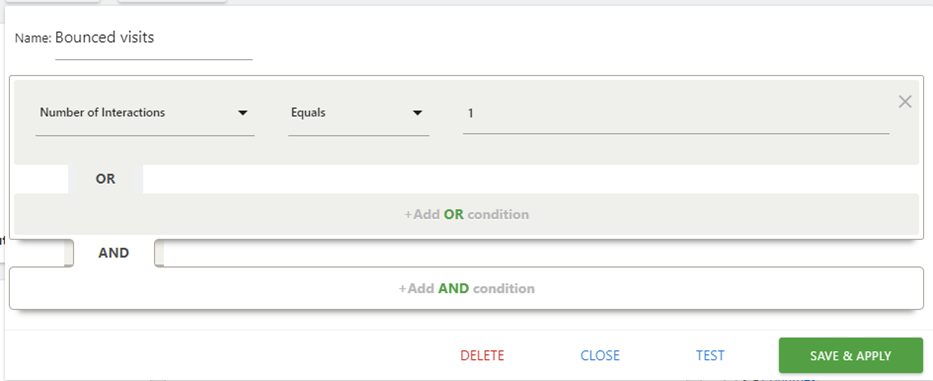
Number of Interactions equals 1